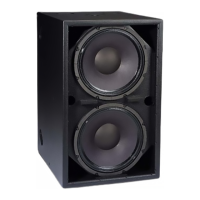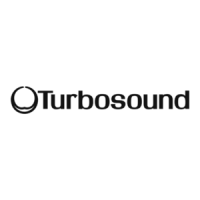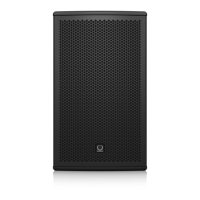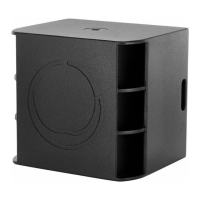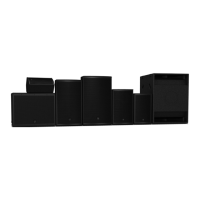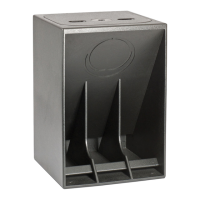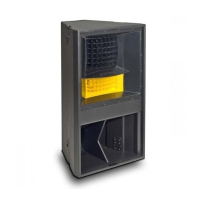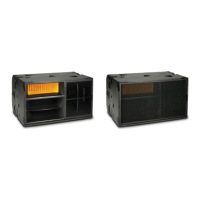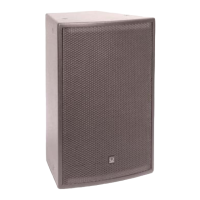user manual
QLight series
System requirements for QLight 300 series products
The TQ-310 is a passive loudspeaker enclosure, meaning that it requires only one amplifier
channel for correct operation, the frequency splitting between the low frequency driver and the
high frequency driver being accomplished by the internal passive crossover network built into
each enclosure. If subwoofer enclosures are used as part of a bi-amplified system in conjunction
with QLight 300 series 2-way enclosures to extend low frequency response, additional amplifier
channels and external electronic crossovers will be required. The Turbosound LMS-D6 digital
loudspeaker management system is recommended for this purpose, as well as other professional
quality digital controllers.
The TQ-315 is a bi-amplified loudspeaker, meaning that each frequency band requires the use of
one amplifier channel for correct operation. Frequency splitting between the low frequency driver
and the high frequency driver is accomplished by an external electronic crossover. The
Turbosound LMS-D6 digital loudspeaker management system is recommended for this purpose,
as well as other professional quality digital controllers.
If subwoofer enclosures are used as part of a bi-amplified system in conjunction with the TQ-310
or TQ-315 to extend low frequency response, additional amplifier channels and external electronic
crossovers will be required.
Amplifier Considerations
Turbosound speaker enclosures should be driven by high quality power amplifiers designed for
true professional use. Such amplifiers will have balanced inputs, DC and RF fault protection, and
well designed cooling systems for reliability. Turbosound power amplifiers such as the TMC-1250,
TMC-750 and TMC-T1000 are recommended for this purpose.
The program power listed in the loudspeaker’s technical specification is the best guide to the size
of amplifier required for general purpose applications. The amplifier should therefore be capable
of delivering long term broadband power equal to the loudspeaker’s program power rating at the
loudspeaker’s stated nominal impedance. This approach allows sufficient headroom to generate
good dynamic range.
RECOMMENDED AMPLIFIER POWER RATINGS:
The amplifier's rated r.m.s. continuous power output (20Hz – 20kHz, per
channel) should be equal to the program power handling of the
loudspeaker at its nominal impedance.
TQ-300 series manual
page 7
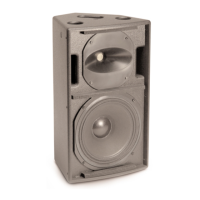
